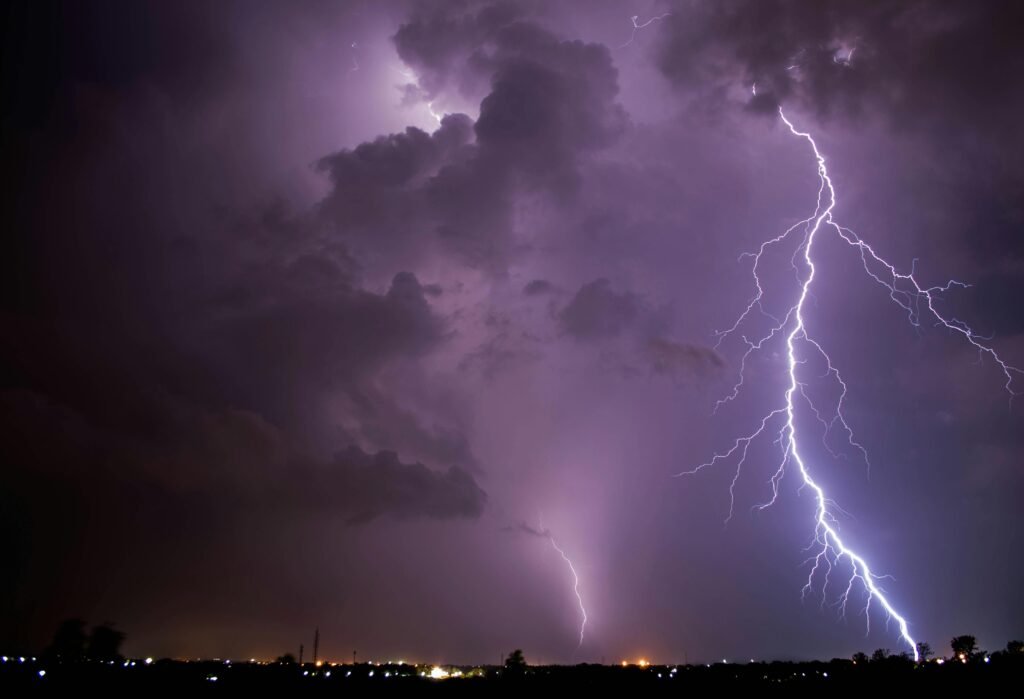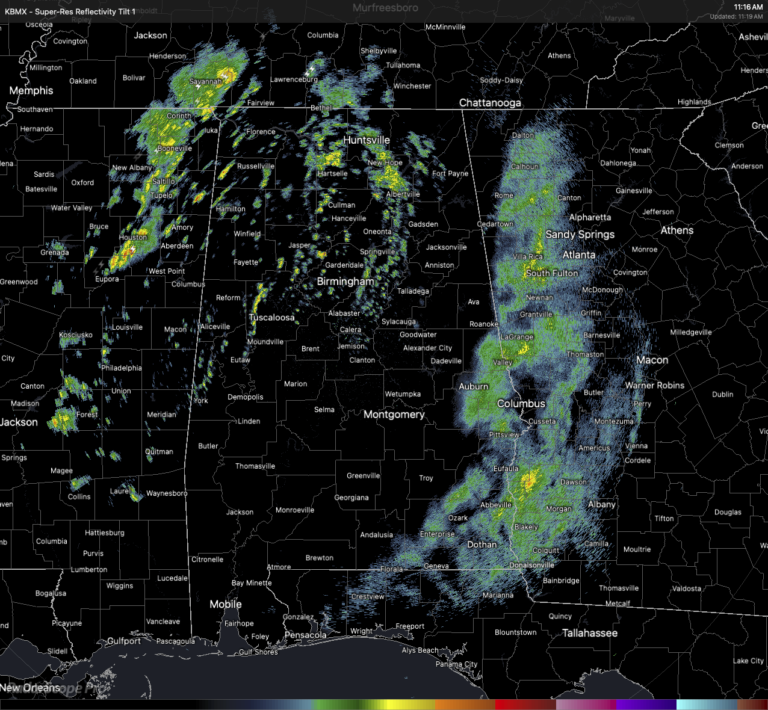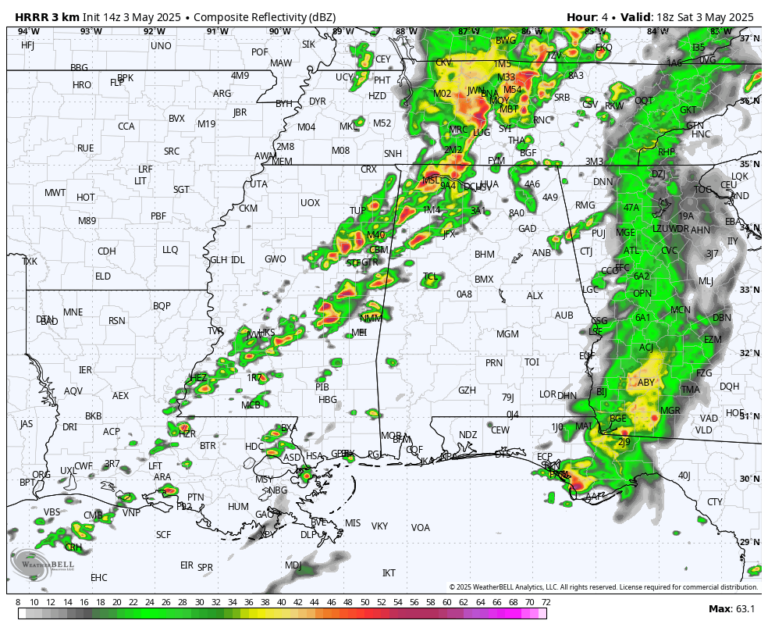
Introduction
In 2025, the southeastern United States, particularly Georgia and Alabama, has experienced a series of severe thunderstorms, prompting numerous warnings and advisories. These weather events have underscored the importance of staying informed and prepared. This article provides detailed insights into the recent severe weather occurrences, safety tips, and resources to help residents navigate these challenging conditions.
Table of Contents
Understanding Severe Thunderstorm Warnings
A severe thunderstorm warning is issued by the National Weather Service (NWS) when there is evidence of severe weather conditions, such as large hail, damaging winds, or tornadoes, either occurring or imminent. In 2025, both Georgia and Alabama have seen multiple such warnings, emphasizing the need for vigilance and preparedness.
Georgia Severe Thunderstorm WarningsWeather Alerts
Georgia has faced significant weather challenges this year. Notably, on May 3, 2025, multiple tornado warnings were issued throughout metro Atlanta and surrounding areas. The NWS’s Peachtree City office provides up-to-date alerts and forecasts to keep residents informed.
Impact on Metro Atlanta
The severe weather events have led to power outages, property damage, and disruptions in daily life. Residents are encouraged to monitor local news outlets and the NWS for the latest updates.
Alabama Severe Thunderstorm Warnings
Alabama has also been impacted by severe weather. On March 15, 2025, a tornado in southern Shelby County reached speeds of 90 mph, causing significant damage. The NWS’s Birmingham office provides real-time alerts and forecasts to assist residents in staying prepared.
Affected Areas
Communities across central and northern Alabama have experienced heavy rainfall, strong winds, and hail. Local authorities have urged residents to remain vigilant and adhere to safety guidelines during severe weather events.
Severe Thunderstorm Warnings Safety Tips
Safety during thunderstorms is paramount. The American Red Cross advises:
- Seek shelter indoors immediately.
- Stay away from windows and avoid using electrical appliances.
- Avoid water-related activities, as plumbing can conduct electricity.
Additionally, the NWS recommends securing loose outdoor items and having an emergency kit ready.
Indoor Safety Measures for Severe Thunderstorm Warnings
- Unplug sensitive electronic equipment before the storm.
- Avoid using corded phones; opt for cordless or mobile phones instead.
- Stay away from concrete floors and walls, as they can conduct electricity.
Outdoor Safety Measures
- Avoid open fields, hilltops, and isolated trees.
- If on open water, get to land and seek shelter immediately.
- Stay away from metal objects, such as fences and poles.
Weather Forecast On Georgia Severe Thunderstorm Warnings
The weather forecast for Georgia indicates continued vigilance is necessary. Residents should regularly check updates from trusted sources like the NWS and local news outlets to stay informed about potential severe weather events.
Seasonal Outlook
The spring and summer months are typically associated with increased thunderstorm activity in Georgia. Residents should be prepared for sudden weather changes and have a plan in place for severe weather scenarios.

The latest HRRR shows that a line of storms will be forming on the boundary as it swings through the state today. For now, there are a few scattered showers over the northern portions of the state, with rain exiting the state over the far eastern counties. None of this activity is anywhere near strong at this point, but the HRRR says that will be changing soon.
Severe Thunderstorm Warnings Weather Forecast Alabama
Alabama’s weather patterns in 2025 have shown increased volatility. Staying informed through the NWS and local meteorological services is crucial for timely updates and safety information.
Anticipated Weather Events
Meteorologists predict a higher frequency of severe thunderstorms during the upcoming months. Residents are advised to remain alert and prepared for potential weather emergencies.
National Weather Service Alerts
The National Weather Service (NWS) provides real-time alerts and warnings for severe weather events. Residents can access these alerts through the NWS website or subscribe to notifications to stay informed about impending weather threats.
Types of Alerts
- Severe Thunderstorm Watch: Conditions are favorable for severe thunderstorms.
- Severe Thunderstorm Warning: Severe thunderstorms are occurring or imminent in the area.
- Tornado Watch: Conditions are favorable for tornadoes.
- Tornado Warning: A tornado has been sighted or indicated by weather radar.

Temperatures
Temperatures as of 11AM were ranging from the lower 60s to the lower 70s across the state, with the warmer temperatures located where there is no activity on the radar. Afternoon highs are expected to reach the upper 60s to the lower 80s.
Severe Weather Preparedness
Preparation is key to mitigating the impacts of severe weather. The NWS suggests:
- Developing a family emergency plan.
- Assembling an emergency supply kit.
- Staying informed through reliable weather information sources.
Regular drills and community awareness programs can also enhance preparedness.
Emergency Supply Kit Essentials
- Water (one gallon per person per day for at least three days).
- Non-perishable food items.
- Battery-powered or hand-crank radio.
- Flashlight and extra batteries.
- First aid kit.
- Whistle to signal for help.
- Dust mask to help filter contaminated air.
- Plastic sheeting and duct tape for shelter.
- Moist towelettes, garbage bags, and plastic ties for personal sanitation.
- Wrench or pliers to turn off utilities.
- Manual can opener for food.
- Local maps.
- Cell phone with chargers and backup batteries.
Storm Tracking Updates
Modern technology allows for real-time storm tracking. Residents can utilize tools like the NWS radar and local news station updates to monitor storm movements and make informed decisions during severe weather events.
Recommended Storm Tracking Tools
- NOAA Weather Radar: Provides real-time radar images and forecasts.
- Weather Apps: Applications like The Weather Channel, AccuWeather, and Weather Underground offer customizable alerts and updates.
- Local News Stations: Often provide live coverage and updates during severe weather events.
Emergency Weather Notifications
Emergency weather notifications are crucial for timely alerts. Systems like the Wireless Emergency Alerts (WEA) and local siren systems provide immediate information about severe weather threats, enabling residents to take swift protective actions.
Subscription Services
- NOAA Weather Radio: Offers continuous broadcasts of weather information and emergency alerts.
- Mobile Alert Apps: Apps like FEMA and Red Cross Emergency provide customizable alerts based on location.
Live Weather Radar Georgia
For residents in Georgia, live weather radar services offer real-time insights into storm developments. Platforms like AccuWeather provide interactive maps to track precipitation and storm movements.
Benefits of Live Radar
- Real-time tracking of storm paths.
- Visualization of precipitation intensity.
- Identification of potential severe weather formations.
Live Weather Radar Alabama
Similarly, Alabama residents can access live radar information through services like AccuWeather, which offer detailed maps and forecasts to help monitor severe weather conditions.
Utilizing Radar Data
- Monitor approaching storms and their intensity.
- Plan travel and outdoor activities accordingly.
- Stay informed about potential flash flooding or tornado developments.
Conclusion
The severe thunderstorms in Georgia and Alabama during 2025 highlight the importance of staying informed and prepared. By utilizing available resources, adhering to safety guidelines, and maintaining awareness of weather developments, residents can better protect themselves and their communities from the impacts of severe weather.
FAQs
1. What is a Severe Thunderstorm Warning?
A Severe Thunderstorm Warning is issued by the National Weather Service when a thunderstorm is producing or is expected to produce hazardous weather conditions, such as damaging winds of 58 mph (93 km/h) or greater, hail 1 inch (2.5 cm) in diameter or larger, or a tornado. These warnings are typically issued for areas where the storm is imminent or occurring.
2. What Should I Do During a Severe Thunderstorm Warning?
When a Severe Thunderstorm Warning is issued, it’s crucial to take immediate action to protect yourself and your loved ones:
- Seek Shelter: Move to a sturdy building, away from windows and doors.
- Avoid Electrical Appliances: Do not use wired electronics or appliances.
- Stay Informed: Monitor weather updates via NOAA Weather Radio, local news, or weather apps.
- Prepare Emergency Kit: Have essentials like water, flashlights, batteries, and first aid supplies readily available.
3. How Can I Receive Severe Weather Alerts in Georgia and Alabama?
Residents in Georgia and Alabama can receive severe weather alerts through several reliable sources:
- NOAA Weather Radio: Provides continuous broadcasts of official Weather Service information.
- Wireless Emergency Alerts (WEA): Short emergency messages sent by authorized authorities.
- Weather Apps: Apps like The Weather Channel, AccuWeather, and local news station apps offer real-time alerts.
- Local News Stations: Television and radio stations provide timely updates during severe weather events.
4. What Are the Risks Associated with Severe Thunderstorms in These States?
Severe thunderstorms in Georgia and Alabama can lead to various hazardous conditions:
- Damaging Winds: Strong winds can uproot trees, damage structures, and cause power outages.
- Large Hail: Hailstones can damage vehicles, crops, and roofs.
- Tornadoes: Some severe thunderstorms may spawn tornadoes, leading to significant destruction.
- Flash Flooding: Heavy rainfall can overwhelm drainage systems, leading to rapid flooding.
5. How Can I Prepare My Home for Severe Thunderstorms?
Preparation can significantly reduce the impact of severe thunderstorms:
- Secure Loose Items: Bring outdoor furniture and decorations inside.
- Trim Trees: Remove dead or overhanging branches that could fall during strong winds.
- Check Roof and Gutters: Ensure your roof is in good condition and gutters are clear to prevent water damage.
- Install Storm Shutters or Reinforce Windows: Protect windows from flying debris.
6. How Can I Stay Updated on Severe Weather in My Area?
Staying informed is key to safety:
- Monitor Weather Forecasts: Regularly check local weather forecasts for updates.
- Use Weather Apps: Enable notifications for severe weather alerts.
- Listen to NOAA Weather Radio: Provides continuous broadcasts of official Weather Service information.
- Follow Local Authorities on Social Media: Many local emergency management agencies provide real-time updates.






